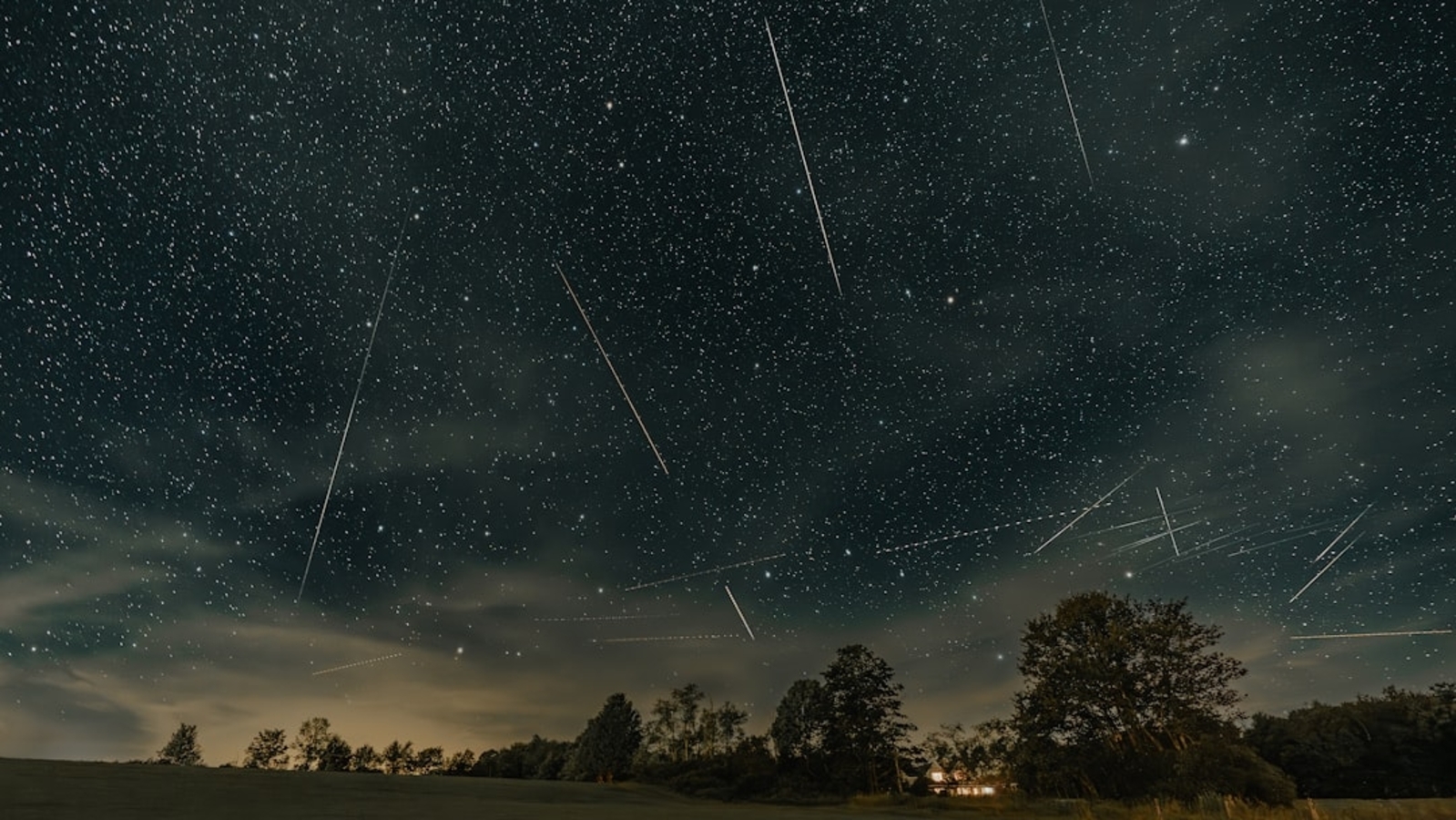Lyrid Meteor Shower Peaks: Catch the Show!
International International NewsPosted by AI on 2025-04-20 00:53:36 | Last Updated by AI on 2025-12-20 10:59:34
Share: Facebook | Twitter | Whatsapp | Linkedin Visits: 19

Witness a celestial spectacle! The Lyrid meteor shower, an annual cosmic event, will reach its peak on the night of April 25-26, 2025. Under clear, dark skies, observers can expect to see up to 15 meteors streaking across the heavens every hour.
The Lyrids, one of the oldest known meteor showers, originate from the debris left behind by Comet Thatcher (C/1861 G1). As Earth orbits the Sun, it passes through this debris field. These tiny particles, often no bigger than a grain of sand, burn up upon entering Earth's atmosphere, creating the fiery trails we see as shooting stars. The radiant point, the apparent origin of the meteors, lies within the constellation Lyra, near its brightest star, Vega. This gives the shower its name. While the meteors appear to emanate from Lyra, they can be seen across the entire sky.
To best enjoy the Lyrids, find a location far from city lights. Light pollution drastically reduces the number of visible meteors. Allow your eyes at least 20-30 minutes to adjust to the darkness. No special equipment is needed; the best way to observe the shower is simply by lying back and looking up. While the peak viewing time is typically after midnight and before dawn, meteors can be spotted throughout the night. Dress warmly, bring a blanket or reclining chair for comfort, and prepare to be mesmerized by the cosmic display.
The Lyrids have been observed for over 2,700 years, with the earliest recorded sighting in 687 BC by the Chinese. While not as prolific as the Perseids or Geminids, the Lyrids are known for occasional outbursts, producing significantly higher meteor rates. While predictions for such outbursts are difficult, the possibility adds an element of excitement to this year's shower. Regardless of outburst activity, the Lyrids offer a captivating glimpse into the vastness of space and our planet's connection to the cosmos. This celestial event serves as a reminder of the dynamic nature of our solar system and provides a unique opportunity to connect with the wonders of the universe. Observing the Lyrid meteor shower is a rewarding experience that can be enjoyed by people of all ages, offering a chance to witness a fleeting but beautiful natural phenomenon.
Search
Categories
Recent News
- Hyderabad Traffic Rerouted for Skywalk Construction
- Hyderabad Man Loses Lakhs in Sophisticated Cyber Scam
- Hyderabad Senior Citizen Scammed: Rs 59 Lakh Lost in Digital Fraud
- Fake Share Trading Scam: Hyderabad Techie's Rs 3.49 Crore Loss Unveils Nationwide Fraud
- Cyber Fraud Foiled: Telangana Police Save Teacher's Retirement Fund
- Hyderabad's Drug Bust: Unveiling a Complex Network
- Hyderabad's Fight Against Cybercrime: A New Approach
- Hyderabad Gears Up for Presidential Visit, Traffic to Be Affected
Popular News
- Navigating IPO Market Dynamics Amid Volatility and Regulatory Changes
- Innovative Green Practices and Environmental Initiative
- Massive Worldwide Microsoft Outage Disrupts Multiple Sectors
- తెలుగుదేశం పార్టీ - పేదరికాన్ని నిర్మూలించడంలో వాగ్దానం
- Universities Embrace Remote Learning Technologies Amidst Ongoing Pandemic